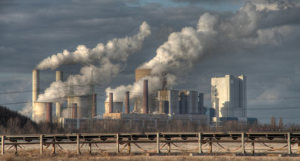More and more regions around the globe combine economic growth with reducing carbon emissions, researchers from the Potsdam Institute for Climate Impact Research found. The new study highlights the vital role of national climate actions in decoupling economic growth from CO2 emissions.

The analysis of data from 1,500 regions over the past 30 years showed that 30 percent have managed to lower their carbon emissions while continuing to thrive economically. While this accelerating trend marks significant progress towards achieving the Paris Climate Agreement, the authors caution that the current pace of decoupling is insufficient to meet the global climate target of net-zero carbon emissions by 2050.
“We found that 30 percent of the regions with available data have fully decoupled carbon emissions from economic growth. Regions with high incomes and a history of carbon-intensive industries, as well as those with significant shares of service and manufacturing sectors were particularly successful in reducing carbon emissions while still experiencing economic growth,” says Anders Levermann, co-author and Head of the research department “Complexity Science” at PIK.
“A stabilisation of the global mean temperature is only possible with net-zero carbon emissions. That means that if economies want to grow, they need to be decoupled from CO2-emissions,” adds Levermann.
The success of decoupling is also driven by subnational climate action: “Specifically, EU cities that have implemented climate mitigation plans and regions that have received increased financial support for climate actions tend to show higher rates of decoupling,” explains Maria Zioga, PIK scientist and lead author of the study.
“Notably, Europe consistently outperforms other parts of the world, with many of its regions showing a continuous decoupling trend over the past 20 years. In contrast, North America and Asia have seen more fluctuating decoupling patterns over the decades, but there’s been an improvement trend in the last decade,” she adds.
Less than half of the regions will be able to achieve net-zero by 2050
While previous studies on carbon decoupling have primarily concentrated on nations or individual cities, researchers at PIK have taken a more granular approach while retaining a global scope. They analysed the economic outputs of 1,500 subnational regions where the observed per capita gross regional product (GRP) was increasing, accounting for 85% of global emissions.
By combining these data with gridded information on production-based carbon emission intensities over the past 30 years, they uncovered significant global patterns of decoupling. A lack of global data on consumption-based emissions at the subnational level means that the study does not reflect the impact of international trade, but nevertheless provides key insights into decoupling patterns across the world.
The researchers also estimated the year in which net-zero emissions could be achieved for each region by looking at past decoupling trends and their impact on emissions. “Developed countries appear likely to fulfill these targets ahead of others, but overall recent trends appear inadequate for achieving the net-zero by mid-century in most regions,” concludes co-author Maximilian Kotz, PIK guest researcher and PIK scientist at the time the study was conducted.
“If current decoupling rates continue, less than half of subnational regions will be able to achieve net-zero carbon emissions by 2050. Therefore, all levels of government need to step up and developed countries in particular should increase their efforts and investment in the energy transition in the developing world in order to meet net-zero targets globally,” he stresses.
